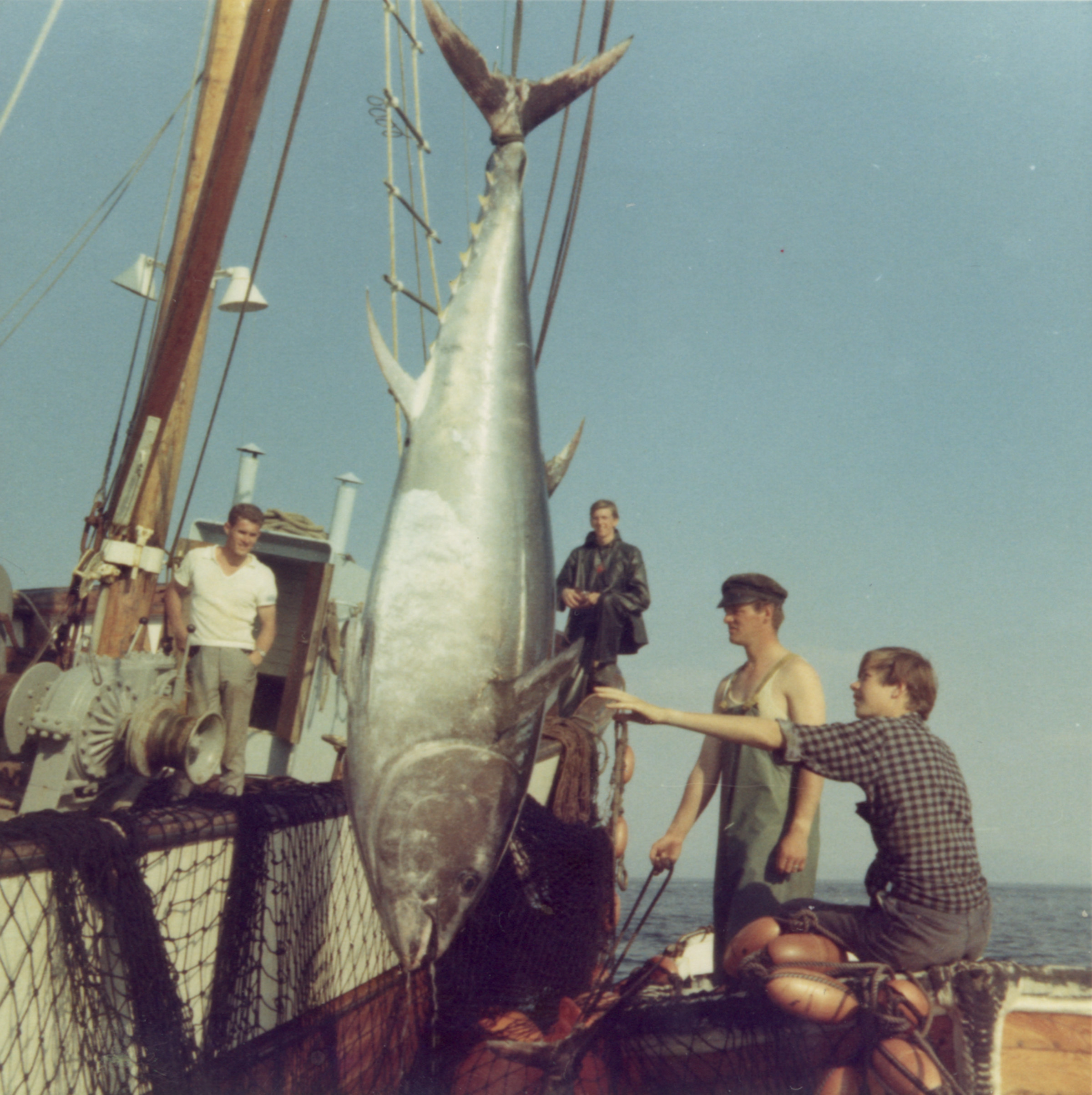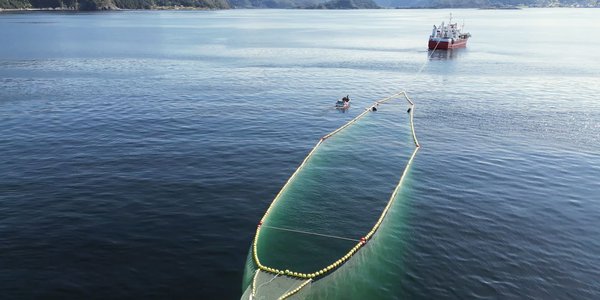Topic: Bluefin tuna

Atlantic bluefin tuna is a sought-after delicacy. (Photo: Jostein Saltskår / Institute of Marine Research)
Published: 28.03.2019 Updated: 19.07.2024
Bluefin tuna is also known as "BFT" for short. It belongs to the mackerel, tuna, and bonito family (Scombridae).
The bluefin tuna is perhaps the most iconic fish species on our planet. It can also be worth its weight in gold on international fish markets.
The fish has a fascinating biology: Based on data from electronic tags with depth sensors, we know that the tuna can swim at 70 km/h, cross the Atlantic in 50 days, and dive down to depths of 1000 meters.
Managed as two stocks
The management recognizes two stocks of Atlantic bluefin tuna in the northern Atlantic: The western Atlantic bluefin tuna spawns in the area around the Gulf of Mexico, while the eastern Atlantic bluefin tuna spawns in the spring during May-June, primarily at three spawning sites in the Mediterranean.
It is primarily the eastern Atlantic bluefin tuna that migrates and feeds in Norwegian waters. After spawning, it embarks on extensive feeding migrations in the Atlantic.
Due to an increased stock in recent years, more and more Atlantic bluefin tuna have been migrating to Norwegian waters for intensive feeding along the coast and in the Norwegian Sea. Mackerel, herring, blue whiting, and other pelagic fish are the main prey, alongside squid and crustaceans.
Eastern Atlantic bluefin tuna reach their maturity at around four years of age. By that time, the fish is over one meter long.
Sought after for sushi
The front part of the body is covered with an "armor" of interlocking scales. The back is dark, the sides shimmer like mother-of-pearl, and the belly is white. There, we also find the most exclusive marbled fillets.
Atlantic bluefin tuna is a sought-after delicacy, especially in the international raw fish market, for sushi and sashimi. The fish has significant economic importance in its main distribution areas.
The Institute of Marine Research (Havforskningsinstituttet) is also exploring the possibilities of keeping wild bluefin tuna in cages, which could be one of several methods to increase the price and value creation of this iconic species in our waters. This is being done in the Mediterranean, but under completely different conditions.
Status, advice, and fisheries
The stock of Atlantic bluefin tuna in the eastern Atlantic and the Mediterranean has increased significantly over the fifteen-year period from 2008 to 2022. After a historical overfishing, the bluefin tuna stock is now considered to be sustainably managed and meets the criteria of the Marine Stewardship Council's (MSC) certification for sustainable standard.
It is the strict measures in management and monitoring that have led to the stock's recovery. Significant underreporting of total catches was prevalent, especially from 1998-2007. The control regime for bluefin tuna has improved significantly over the past 10-15 years and is now one of the strictest in the world.
Better and more knowledge about the bluefin tuna has also been acquired, and new management strategies have been adopted in collaboration between scientists and managers.
The stock management in the International Commission for the Conservation of Atlantic Tunas (ICCAT), of which Norway is a member, estimates the potential long-term yield (annual, harvestable surplus) for eastern bluefin tuna to be around 50,000 tons.
The total quota for eastern bluefin tuna was set to 40,570 tons for the years 2023, 2024, and 2025.
Atlantic bluefin tuna is primarily fished internationally using purse seines and longlines, but also with rod and reel, drift nets, and fish traps.
Historical fisheries in Norway
Through all historical times, mature Atlantic bluefin tuna aged from 4-20 years (30 kg to over 470 kg) have visited the Norwegian coast from the Oslofjord to Troms from July to October. The largest individuals swim the fastest and also migrate the furthest.
In the 1950s and 1960s, Norway was a significant fishing nation for eastern Atlantic bluefin tuna, with annual catches of up to 15,000 tons. An average of 5,430 tons of bluefin tuna was fished between 1950 and 1970.
The bluefin tuna was mainly caught using purse seines along the entire coast from the Oslofjord to the Varangerfjord, but with a clear focus on the Western Norway, especially off Rogaland and Hordaland.

The bluefin tuna was a frequent visitor until the end of the 1970s when fewer and fewer fish found their way to the Norwegian coast. By 1986, this fishery was temporarily history, until the historic return of the bluefin tuna to Norwegian waters from 2012 onwards.
Modern fishery in Norway
Due to the positive stock development, Norway reopened fishing for Atlantic bluefin tuna in the Norwegian Exclusive Economic Zone (EEZ) in 2014.
Satellite tags from bluefin tuna, visual observations, and catches in recent times show that the number of bluefin tuna has increased significantly from 2012-2022 in Norwegian waters along the Norwegian coast and in the Norwegian Sea.
Preliminary results from the extensive satellite tagging project at the Institute of Marine Research have documented that the bluefin tuna remains in Norwegian waters for over three months and can dive deeper than 1,000 meters. New knowledge also suggests that some bluefin tuna feed in Norwegian waters throughout the fall and all winter.
The Norwegian quota for Atlantic bluefin tuna has increased tenfold from just over 30 tons in 2014 to 315 tons in 2022. Norway also made a case for a higher quota for bluefin tuna in the eastern Atlantic and the Mediterranean, amounting to a total of 383 tons in 2023.
Over time, this has resulted in a significant increase in fishing in Norway, expanding from only one purse seine vessel in 2014-2016 to a small fleet of around 10 vessels in recent years.
In 2020, a scientifically-based recreational fishing with rod and reel began, which by 2023 consisted of 58 fishing teams. This rapid developments in this fishery, has contributed to the establishment of a commercial rod and reel fishery, which had 22 registered vessels in 2023.

